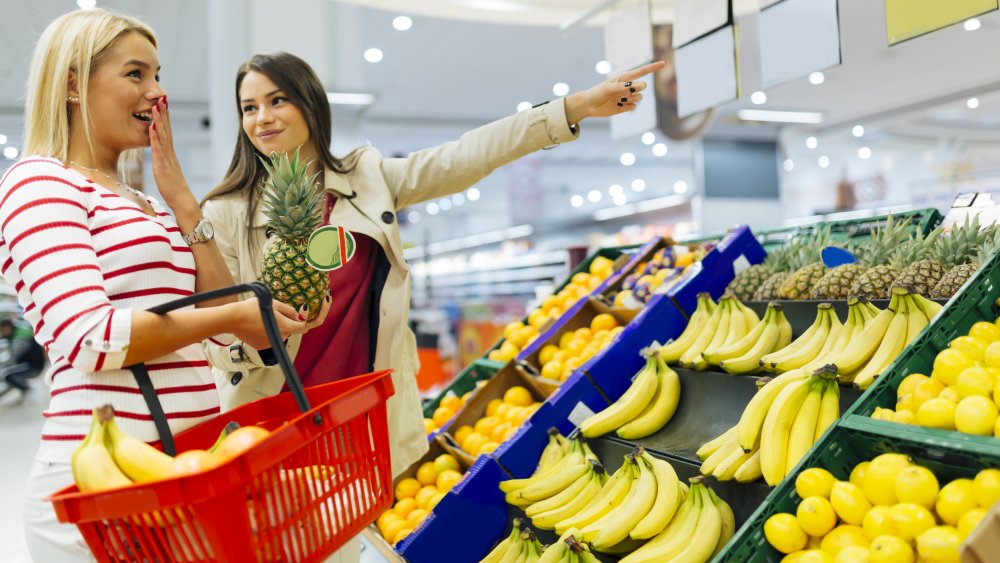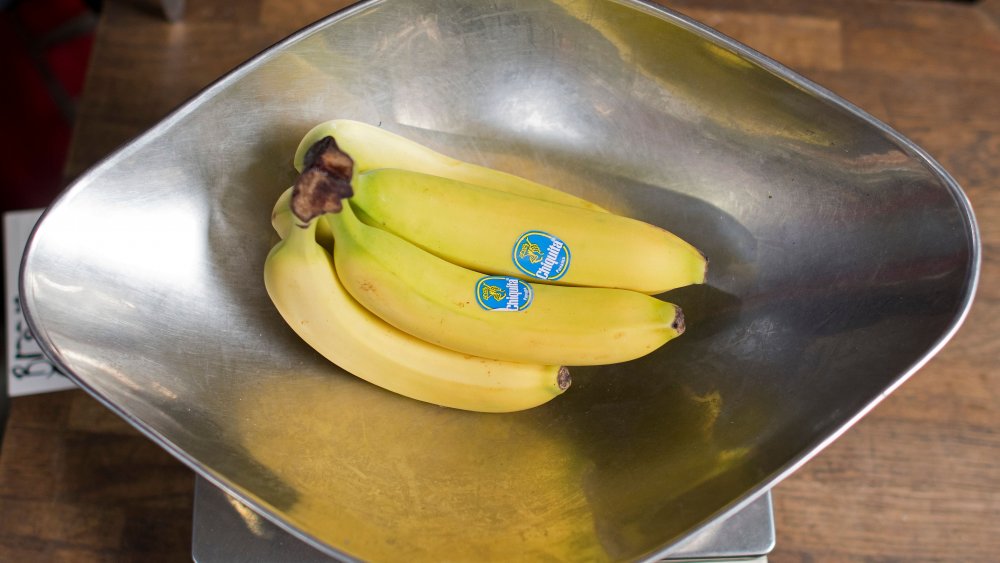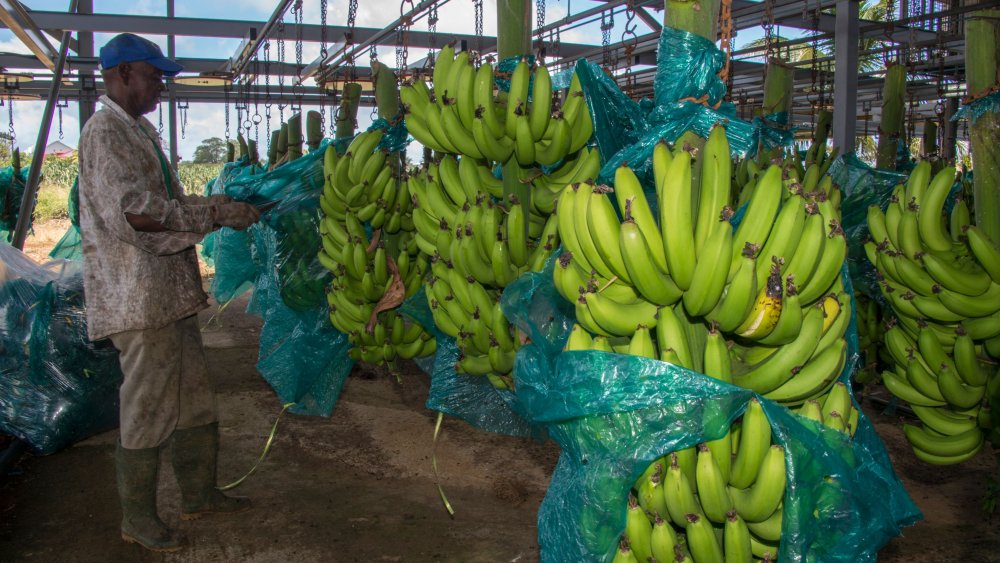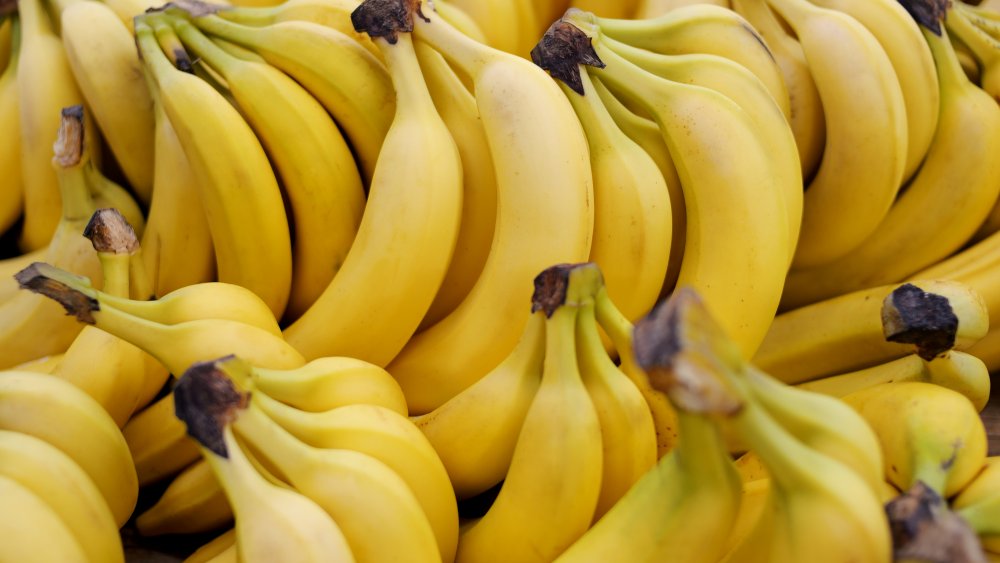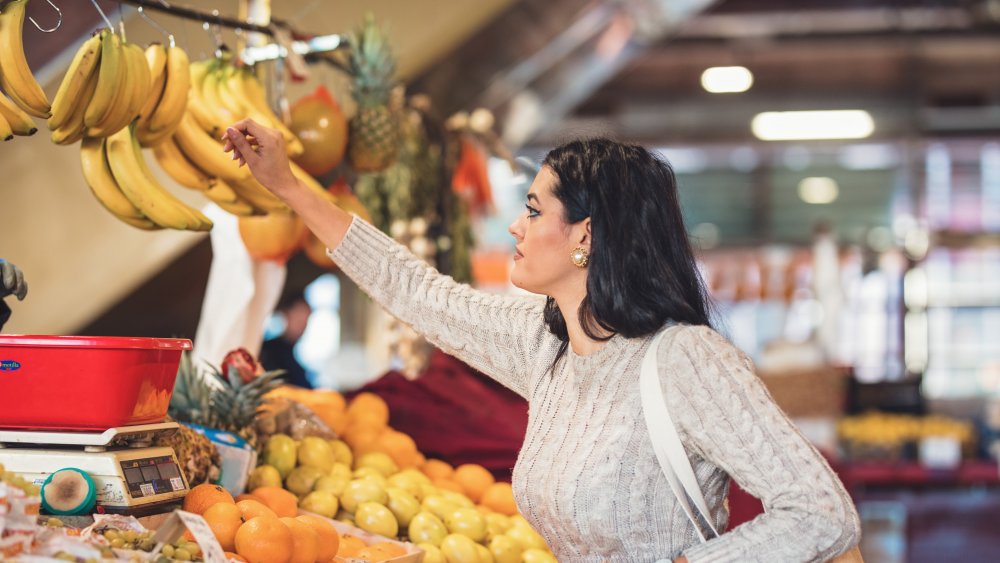Why Are Bananas So Cheap?
If you think of the quintessential American fruit, it would probably have to be the apple — apples have been a staple of the nation's diet since colonial times, after all, and they are grown throughout much of the U.S. Despite their seeming ubiquity, apples are not the cheapest, nor the most popular, fruit consumed in the country. While apples may still be the gift of choice when sucking up to teachers, bananas are the fruit that seems to be in every kid's lunchbox, thanks to their low, low price — currently. Walmart Grocery appears to be pricing them at 49 cents per pound (depending on your location), while Trader Joe's famously sells single bananas for just 19 cents apiece.
If apples are locally grown, though, while bananas only grow in the tropics and must be hand-picked, carefully packed, and shipped in refrigerated containers for thousands of miles to reach our supermarkets, how can bananas possibly be so inexpensive? The answer is complex, but it involves a mixture of marketing tactics, political meddling, and not-so-natural selection.
Bananas become big business
According to National Geographic, the humble banana was first introduced as an exotic imported delicacy at Philadelphia's 1876 Centennial International Exhibition. Despite being priced at 10 cents (equivalent to about $2 today), the fruit was wildly popular, so much so that in the years following, two American businessmen would found the Boston Fruit Company (later United Fruit Company and, eventually, Chiquita) and start buying up tracts of land in Jamaica to start their own banana plantations. They even acquired steamships to transport those bananas.
One of those businessmen, Andrew Preston, predicted that he could make bananas more popular than apples, and he instituted an aggressive marketing campaign to ensure an ever-expanding market for his fruit (via Vox).
The rise of banana republics
One reason the early banana barons could sell the fruit at a low price was that they kept their own costs down. They were able to acquire land in Costa Rica, Honduras, and Guatemala very cheaply, as well as securing themselves advantageous tax breaks from those countries' governments — basically authoritarian regimes in the early 20th century when this expansion was taking place — in exchange for offering concessions such as building roads, railroads, or other improvements which were bound to benefit the growers as well as the citizenry. Labor costs were also minimal, in part due to the growers being permitted to import underpaid labor from the West Indies.
The ties between Big Banana and these Central American governments persisted throughout the 20th-century, and, in fact, United Fruit ended up serving as the de facto governing body in both Guatemala and Honduras. This lead to both countries being known as "banana republics," as they were seen as existing primarily to ensure an ongoing supply of fruit for the American market.
While the banana barons' interference is no longer so overt, they still exert considerable political influence in those developing nations where they source their product, and they continue to enjoy — and exploit — a seemingly unlimited supply of low-cost land and labor
The standardization of the banana itself
While there are actually hundreds of different varieties of bananas found around the world, we only see one type on the grocery store shelves: the big bright yellow Cavendish. While the original bananas imported by United Fruit were of a type known as the Gros Michel, these bananas were stricken in the 1950s by something called the Panama disease fungus. By the 1960s, the disease had wiped out the Gros Michel.
Enter the Cavendish — easier to pick, easier to pack, and a color sure to attract attention in supermarket fruit bins. Sadly, Cavendishes are probably the least-flavorful type of banana, but that didn't bother the producers too much. Soon they were back in business, and bananas were cheaper than ever.
Bananas might not stay cheap much longer
One reason the Cavendish is so easy — and thus inexpensive — to grow is that these plants reproduce asexually, which means that each banana tree is basically a clone of its predecessor and each banana tastes exactly the same. While such standardization may seemingly make the banana an ideal product for marketers, there's one very significant downside — it makes the plants very vulnerable to any type of virus that evolves to attack their shared weaknesses.
The Cavendish banana may have been impervious to the original version of the Panama disease that destroyed the Gros Michel, but a new strain called Tropical Race 4 has moved from Asia to Africa, and the latest news, as of December 2019, has reported its presence in Colombia (via The American Phytopathological Society). While this new virus probably won't wipe out the entire Cavendish strain, it will impact production significantly, with the likely result that supply goes down — and prices go up.
